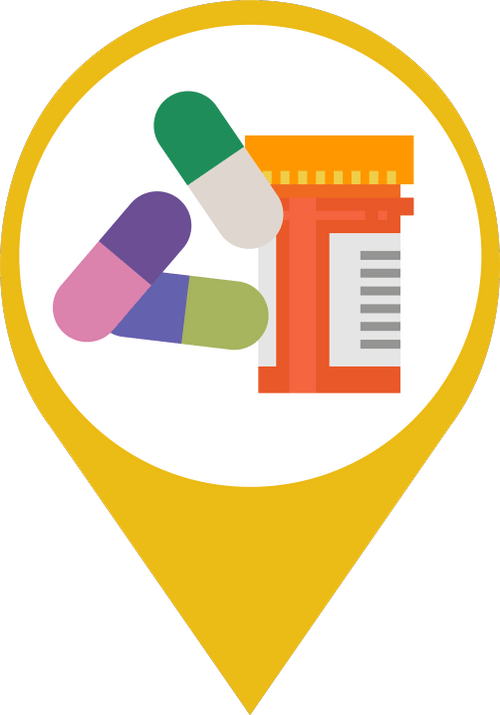Emerging Contaminants
Emerging Contaminants
Also known as contaminants of emerging concern (CECs), contaminants of concern, emerging contaminants, incidental contaminants, pharmaceuticals in the environment, pharmaceuticals and personal care products (PPCPs), endocrine disrupting compounds (EDCs), poly-aromatic hydrocarbons (PAHs), and polychlorinated biphenyls (PCBs).

Because there are a wide variety of harmful contaminants that can be found in water they are grouped in various ways and referred to by many different names. Some terms are interchangeable and may cover broad categories, while other terms are more specific.
What are harmful and emerging contaminants?
There are hundreds of thousands of industrial and other fabricated chemicals used today for many different purposes and in many products. Many of these have been released to the environment on an ongoing basis. For some of these compounds, there is conclusive evidence that they are harmful to humans and other biota. Others are suspected (but not proven) to be harmful. Some are everyday products like gasoline.
Contaminants are generally grouped into categories based on their chemical properties. These categories include petroleum hydrocarbon compounds, chlorinated solvents, and polybrominated diphenyl ethers (PBDEs). Sometimes they are grouped based according to their original purpose, such as pharmaceuticals, wood preservatives, plasticizers, and degreasers. Pesticides are also often categorized as harmful and emerging contaminants.
Pharmaceuticals and personal care products are some of the emerging contaminants receiving the most attention. Over-the-counter and prescription medication and some ingredients in toiletries, cosmetics, perfumes, cleansers, and hair products wash down the drain and are not fully removed in the wastewater treatment process. Some of the ingredients are being traced to problems in the environment.
Flame retardants are also harmful contaminants. These are used in many types of textiles (e.g., clothing, bedding, furniture, etc.) and building materials. They are important for slowing down or preventing fires, however the compounds can wash off in the laundry or be released into the atmosphere when building materials burn.
Are harmful and emerging contaminants regulated in Alberta?
Some contaminants are regulated, but many are not. Some harmful contaminants are not yet regulated because scientific data is not yet conclusive about the concentrations at which they cause harm to humans or other organisms. In many cases, the contaminant has been released to the environment for some time but there has been no way to measure the presence or effect in the natural environment until now (thanks to new testing technologies).
Contaminants are difficult to study, and many of them have not been studied thoroughly in a laboratory for impacts on the environment. Further studies will help policy makers determine how to regulate them and what guidelines to set.
Are contaminants in my water?
Source Water
Yes, around the world, emerging contaminants are found in all surface water and some groundwater.
Simple, rapid tools for assessing concentrations and different forms of emerging contaminants do not yet exist, and resources are limited for doing research to determine how these compounds and combinations of different compounds impact aquatic life.
Tap Water
Public water treatment systems in Alberta are designed to maintain tap water at a standard that is safe to drink. It is possible that there are very low concentrations of some contaminants in your tap water, but in these cases, there is no conclusive evidence that they have any health impacts.
What are the impacts on human health?
Part of the concern about emerging contaminants is that the impacts on human health are not clearly known.
Pharmaceutical products pose an interesting challenge because they are designed to have an impact on human health so, when they are found in drinking water, we can assume the human body will be impacted. However, they are usually found in such small amounts in water that they do not come close to the dosage amount required for them to act.
What are the impacts on the environment?
Some emerging contaminants have gained significant attention due to observed impacts on wildlife or the natural receiving environment.
Synthetic estrogens from birth control pills and hormone replacement therapy drugs have been found in Alberta rivers downstream of municipal effluent.
Runoff from agricultural and cattle operations are another potential source of natural steroids and compounds that exhibit estrogen-like activity, which in extreme cases may cause unnatural proportions of male and female fish populations, and fish with multiple sex organs or that are infertile.
How do contaminants get into the water?
Contaminants mostly come from everyday products, and get washed, flushed, or discarded, and end up in soil and water. Wastewater treatment plants may not be able to remove the contaminants from the wastewater so they end up being released into the river. Some emerging contaminants are removed by ultraviolet light, some are removed in settling ponds, some can be filtered out with very fine filters, and some degrade over time.
What can we do about contaminants in the water?
Dispose of motor oil, paint, vehicle fluids, electronics, and all hazardous wastes in designated disposal areas.
Do not put extra medication or expired medication down the drain. Take them to a pharmacy for safe disposal.
Use environmentally-friendly cleaning products.
Do not dispose cosmetics, or skin and hair products down the drain.
Where can I find more information?
Contaminants of Emerging Concern including Pharmaceuticals and Personal Care Products – US Environmental Protection Agency
Water Quality Indicators – Hydrocarbons
Links to webpage information and technical reports – Environment and Climate Change Canada
Sources:
U.S. Geological Survey (2017). Contamints of Emerging Concern in the Environment. U.S. Department of the Interior. https://toxics.usgs.gov/investigations/cec/index.php
Sauvé, S., & Desrosiers, M. (2014). A review of what is an emerging contaminant. Chemistry Central Journal, 8(1), 15. https://www.ncbi.nlm.nih.gov/pmc/articles/PMC3938815/
Herman, R. (2014, May 7). Emerging Contaminants Taint Drinking Water Supply. Scientific American. https://blogs.scientificamerican.com/guest-blog/emerging-contaminants-taint-drinking-water-supply/
Proctor, A. (2009). Emerging Contaminants, Assessing Pennsylvania’s Watersheds and Drinking Water Supplies. Presentation online, retrieved from http://www.awra-pmas.memberlodge.org/resources/Documents/AWRA_ECstudy_EPA_AP.pdf
Government of Alberta (2005). Aquatic Ecosystems review of Issues and Monitoring. http://aep.alberta.ca/water/programs-and-services/water-for-life/healthy-aquatic-ecosystems/documents/AquaticEcosystemsIssuesMonitoring-Oct2005.pdf
Conestoga-Rovers & Associates (2014). Final Report: Drinking Water Survey for New Parameters of Interest/Concern. Alberta Environment and Sustainable Resources Development. http://aep.alberta.ca/water/programs-and-services/drinking-water/knowledge/documents/DrinkingWaterSurvey-Mar27-2014A.pdf
